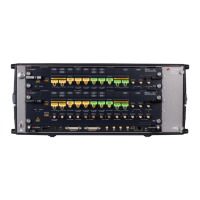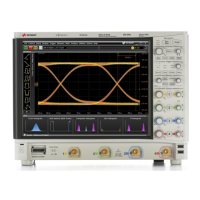Ensure proper grounding
• Always use the three-prong AC power cord
supplied with the product.
• Proper grounding of the instrument will
prevent a build-up of electrostatic charge,
which may be harmful to the instrument and
the operator.
• Do not damage the earth-grounding
protection by using an extension cable,
power cable or autotransformer without a
protective ground conductor.
• Check AC power quality and polarity; typical
AC voltage required is 100 V, 120 V, 220 V
±10%, 240 V +5 %/ -10 % or
380 V (3 Phase). Typical expected grounding
wire resistance is < 1 Ω, the voltage between
neutral and ground line is < 1 V. Install
uninterruptible power supply [UPS] if
necessary.
Read the warning labels and
specifications
• Do not exceed the values provided in the
datasheet or as indicated by the yellow
warning labels on the product.
• Refer to the Getting Started Guide for
conditions required to meet the listed
specification. Note information regarding
warm up time, instrument settings and
calibration/air-flow requirements.
• For example, a yellow warning label on the
front panel of the product indicates the
maximum input level. Do not exceed this
value. Do not operate outputs into open.
Terminate unused outputs with 50 Ohms.
Avoid overpowering the product
• Avoid damage by having an initial estimated
power value for the signal level to be applied
to the product. Overpowering the inputs may
cause damage to front-end components.
Do not exceed maximum input levels printed
on front panel of the product.
• Before turning on or turning off the
connected equipment or the DUT, reduce the
signal level to the minimum level. This should
help to prevent unexpected voltage swell or
sag affecting the input or the output of the
instrument.
• Properly apply a DC block, limiter or external
attenuator as additional safety measure, if
possible.
Ensure proper instrument cooling (air-
flow)
• Make sure that there is adequate clearance
of minimum 50 mm (2 inches) around vent
holes of the chassis to ensure adequate
airflow, especially when the instrument is
installed in the chassis.
• Some instruments, such as M8057A, have an
internal fan to keep the components cooled
to normal operating temperatures. Make sure
that there is enough clearance for adequate
air-flow.
• If the air-flow is restricted, the internal
operating temperature will be higher,
reducing the instrument’s reliability.
• Do not cover the ventilation holes.
• Periodically check and clean the cooling
vents of the instrument. Inadequate air-flow
can result in excessive operating
temperatures, which can lead to instrument
failures. Refer to the product datasheet for
allowable operating temperature range.
Follow electrostatic discharge
precautions
• Electrostatic discharge (ESD) can damage or
destroy electronic components. Whenever
possible, conduct testing at a static-safe
workstation.
• Ensure grounded environment and
personnel.
• Wear ESD suitable clothes and shoes.
• Keep static-generating materials e.g. plastic
boxes, tape, PC mouse, keyboard, etc. at
least one meter away from all components.
• Damage of components by ESD can occur at
voltages as low as 100 V.
• When testing a passive DUT, work on an ESD
workstation or utilize an air ionizer. Discharge
the test point by using a probe directly
grounded to a primary earthing terminal.

